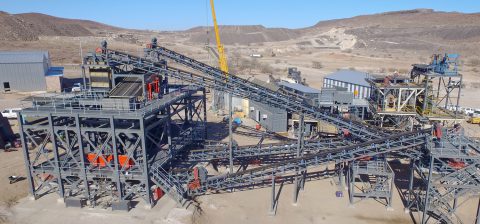Technology, Solutions and Innovations
The Power Of Harnessing
Current trends have brought terms like the fourth industrial revolution, artificial intelligence, digitisation and the internet of things strongly to the fore.
For many, these remain just that – words and terms full of promise, but still short on immediate practicality and use. While our smartphones, tablets and laptops have many applications using these concepts, how do we apply them in our workplace in ways other than those offered by large and expensive enterprise resource planning software platforms?
It’s an issue that plagues many companies – how to extract and interpret the masses of staff data each company possesses. Data mining if it is not correctly placed and executed can become a large waste of time and money. This is why so much data and information that can guide us in how we operate, staff, train and resource slips us by every day.
Benchmarking

The other problem with data is what it actually tells us. If my healthcare device tells me what my heart rate is, I need another data point to indicate what the true value of that heart rate information is. Benchmark heart rate statistics for my age and height will soon place my heart rate into perspective and tell me whether my n data point is good or bad. Without that benchmark, my data in isolation is not of much use.
So we find ourselves with a horde of information within our organisations, but not much to do with it. Are our divisions and departments understaffed or overstaffed? Are our team sizes too big to be effective? Or are they too small requiring additional supervisory and management positions that come at an added cost? Do we have too many support staff in terms of their ratio to operational staff?
Our own data points on all these questions are not very useful in isolation. It is only when we can compare ourselves to data points from organisations similar to ours in terms of size and industry that we get a true reflection of where we are. And that is difficult – industry competitors are not known for freely sharing this information with each other. Another way of using internal data that is often overlooked by organisations is the “best in practice” internal benchmark. This needs to be used selectively, though, and only where you can compare apples with apples. It is not very useful to compare service divisions such as Finance and Human Resources, as there are often differences in delivery and processes that render such internal benchmarking biased and not useful.
But where an organisation has multiple operations of a similar nature, such as factories or mines, it is useful to examine the staffing and productivity data and establish what sets your best-performing operation apart from the rest. That can then be used as the “alternative data point” that drives your comparisons. All other operations should be targeted with matching the results of the top internal entity.
Using data properly
Following the simple rules below will help you to start making use of your workforce data. These steps will ensure that you make a start to extracting the full value that modern workforce analytics and data can offer.
- Make sure you are comparing apples with apples, whether using internal or external benchmarking. Ensure you have considered all the variables before proceeding.
- Make sure you consult with the areas you wish to benchmark; they will be the best source of the information and variables you might miss.
- Ensure that you extract up-to-date and accurate data. It is surprising how often data is incorrectly calculated or missing an element that would change the entire hypothesis.
- If you are benchmarking externally and using a service provider, make sure they have an appropriate data set that suits your organisation and also adheres to the “apples with apples” rule. If a service provider cannot match you with their database, rather do not attempt a Plan B with benchmarks that are more removed.





